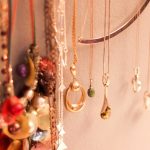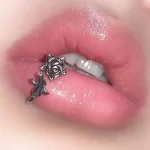Discovering whether your jewelry is real gold can be both exciting and essential. Whether you’ve inherited a family heirloom, bought a vintage piece online, or are considering selling old items, knowing how to verify gold content is crucial. That’s why learning how to test jewelry for gold is such a valuable skill. With so many fakes, gold-plated imitations, and misleading stamps in circulation, relying solely on appearance is risky.
Thankfully, several reliable methods exist to help determine if your jewelry is genuine. Some tests are simple enough to perform at home using everyday tools. Others require specialized equipment but offer greater accuracy. Each method has its strengths and limitations, and understanding them helps you make informed decisions.
Gold jewelry may carry hallmarks like “14K,” “18K,” or “750,” but these can be forged. Visual inspection alone won’t confirm authenticity. Instead, a combination of physical, chemical, and professional techniques provides the clearest picture.
Moreover, testing protects you from overpaying for fake items or undervaluing real ones. If you’re planning to sell, pawn, or insure your jewelry, accurate results are necessary. They also help preserve sentimental pieces by ensuring proper care based on metal type.
In this guide, we’ll walk through multiple ways to test jewelry for gold. You’ll learn about visual checks, magnet tests, scratch assays, acid kits, electronic testers, and professional appraisals. We’ll explain how each works, what you need, and how to interpret the results safely.
By the end, you’ll have a solid understanding of how to test jewelry for gold, empowering you to handle your valuables with confidence and knowledge.
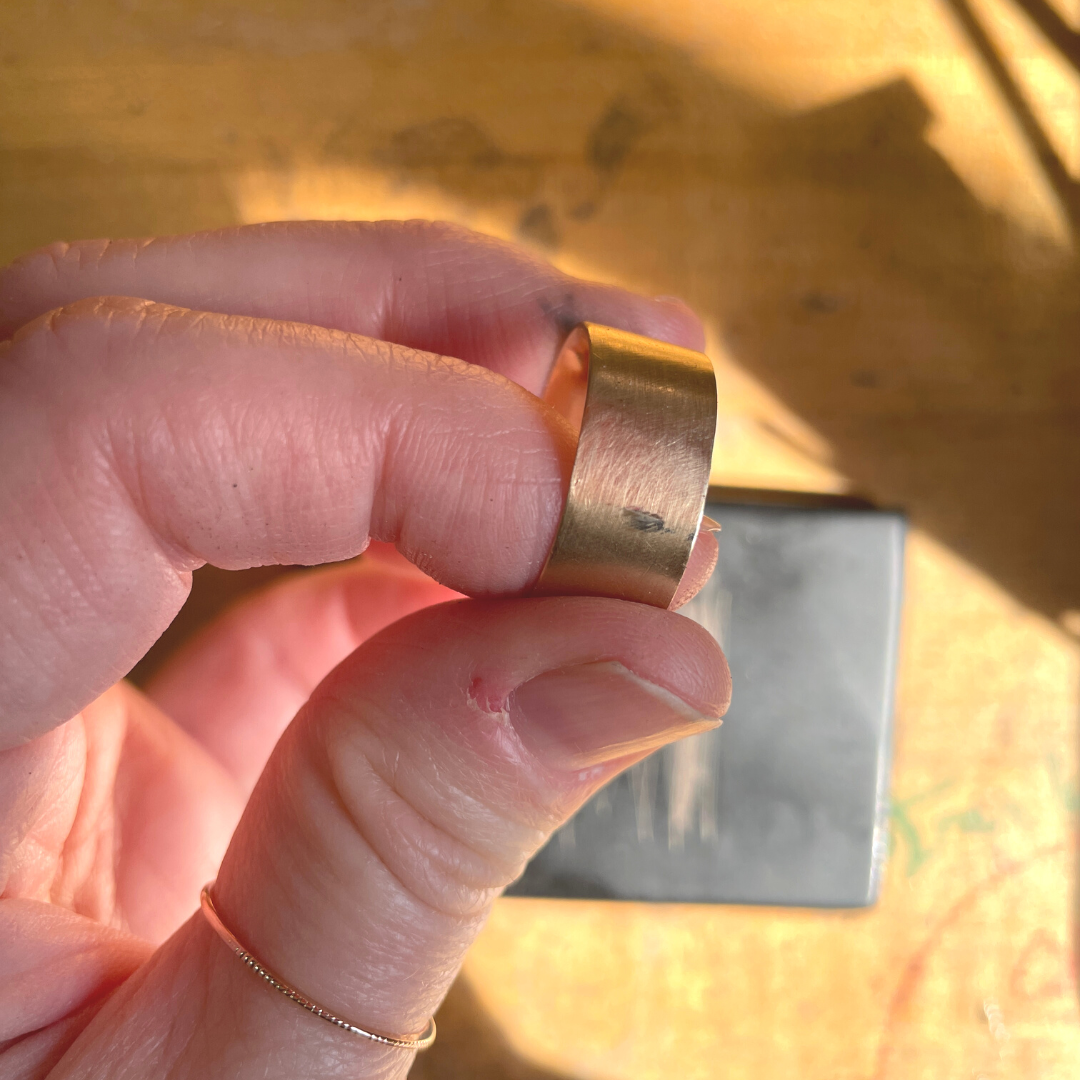 Visual Inspection: The First Step in How to Test Jewelry for Gold
Visual Inspection: The First Step in How to Test Jewelry for Gold
Before diving into advanced methods, start with a careful visual examination. This step costs nothing and often reveals early clues about authenticity.
Look for Hallmarks and Stamps
Real gold jewelry usually carries a stamp indicating purity. Common marks include:
- 10K, 14K, 18K, 22K, or 24K (karats)
- 417 (10K), 585 (14K), 750 (18K), 916 (22K), 999 (24K)
These numbers represent the percentage of pure gold in the alloy. For example, 14K means 58.3% gold. Use a magnifying glass to locate the stamp, typically found on clasps, inner bands, or hinges.
However, absence of a stamp doesn’t always mean it’s fake. Older or handmade pieces may lack markings. Conversely, fake jewelry can have counterfeit stamps.
Check for Discoloration and Wear
Gold does not tarnish. If you notice green, black, or red discoloration on the skin after wearing, the item is likely not pure gold. These reactions come from base metals like copper or nickel.
Also, inspect areas prone to friction—such as edges or high points. If the surface appears lighter or shows a different metal underneath, it may be gold-plated rather than solid gold.
Examine Craftsmanship and Weight
Genuine gold has substantial weight due to its density. Compare the piece to similar-looking non-gold items. If it feels unusually light, that’s a red flag.
Look at details like engravings, settings, and joins. Poorly made joints or uneven surfaces suggest lower quality or imitation.
While visual inspection isn’t definitive, it sets the foundation for further testing.
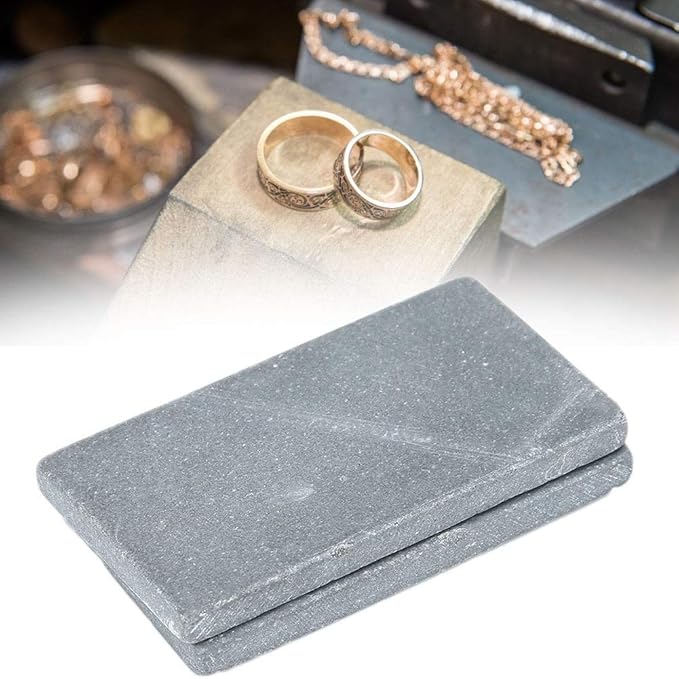 The Magnet Test: A Quick Way to Rule Out Fakes
The Magnet Test: A Quick Way to Rule Out Fakes
One of the simplest and safest ways to begin how to test jewelry for gold is the magnet test. Since gold is not magnetic, this method quickly identifies obvious counterfeits.
How to Perform the Test
Hold a strong neodymium magnet close to the jewelry. Do not touch the piece directly. Observe whether it pulls toward the magnet.
If the jewelry moves or sticks, it contains ferromagnetic metals like iron, nickel, or steel. Therefore, it cannot be pure gold.
Even weak attraction indicates the presence of magnetic alloys. Solid gold will show no response at all.
Limitations of the Magnet Test
This test only rules out fakes—it cannot confirm real gold. Some non-magnetic metals like aluminum, brass, or lead also don’t attract magnets. A thief could coat these with a thin gold layer to pass this test.
Additionally, some gold alloys contain small amounts of magnetic metals. However, the pull should still be negligible.
Always use this test as a preliminary check. Combine it with other methods for better accuracy.
Despite its limits, the magnet test is fast, free, and effective for eliminating clearly fake items.
Acid Testing: A Reliable Chemical Method to Confirm Gold Purity
Acid testing is one of the most trusted ways to determine gold content. It’s widely used by jewelers, pawn shops, and scrap buyers because it delivers precise results.
What You Need for Acid Testing
To perform this test, you’ll need:
- A gold testing kit (available online or at jewelry supply stores)
- A set of nitric and aqua regia acids labeled for different karats
- A testing stone (unglazed ceramic tile)
- Droppers or applicators
- Safety gloves and goggles
These kits are affordable and reusable. Follow all safety instructions carefully.
Step-by-Step Process
First, clean the jewelry with soap and water. Dry it completely. Then, gently rub the item across the testing stone to leave a visible streak.
Next, apply a drop of acid corresponding to the suspected karat—start with 14K acid if unsure. Watch the reaction.
- If the streak dissolves or changes color, the gold is lower than the tested karat.
- If the streak remains unchanged, the gold is equal to or higher than the tested karat.
- If no reaction occurs with higher-karat acid, the piece exceeds that purity.
For example, if the streak survives 14K acid but disappears with 18K acid, the item is between 14K and 18K.
Accuracy and Risks
Acid testing is highly accurate when done correctly. It can distinguish between 10K, 14K, 18K, and 22K gold reliably.
However, it leaves a small mark on the jewelry. Never use this method on valuable or irreplaceable pieces unless absolutely necessary.
Also, acids are corrosive. Work in a well-ventilated area. Keep children and pets away.
When performed safely, acid testing is one of the best DIY methods for confirming gold content.
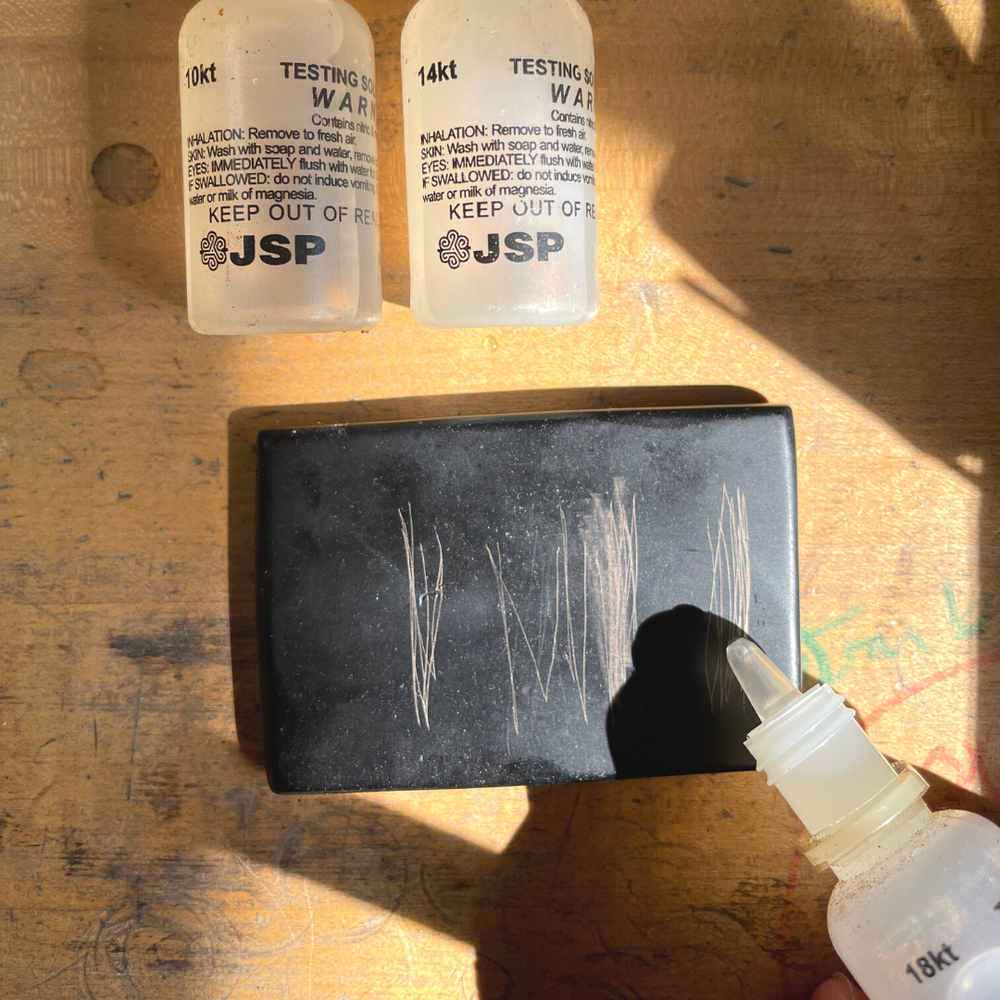 Using a Scratch Test with a Touchstone
Using a Scratch Test with a Touchstone
The scratch test, also known as the touchstone method, works alongside acid testing but focuses on comparison.
How the Touchstone Works
Rub the jewelry on a flat black stone to create a fine powder trail. This exposes the true metal beneath any plating.
Then, use reference needles of known gold purity (e.g., 10K, 14K, 18K) to make parallel lines on the same stone.
Apply acid across all streaks. Compare how they react.
- If your jewelry’s streak behaves like the 14K needle, it’s likely 14K gold.
- If it fades faster, it’s lower purity.
- If it resists longer, it may be higher.
This side-by-side approach increases accuracy.
Advantages Over Direct Testing
The touchstone prevents direct contact between acid and your jewelry. Only the tiny residue on the stone gets exposed.
It preserves the item’s surface better than scratching it directly.
Professional testers prefer this method because it minimizes damage while maximizing reliability.
Use it when you want confirmation without risking major scratches.
Electronic Gold Testers: Fast, Non-Destructive Analysis
For those who want accurate results without damaging their jewelry, electronic testers offer a modern solution.
How Electronic Testers Work
These handheld devices send a small electrical current through the metal. Gold conducts electricity differently than other metals. The device measures resistance and displays the result on a digital screen.
Most testers can identify karat levels from 8K to 24K. They work on rings, necklaces, bracelets, and coins.
Benefits of Digital Testing
The biggest advantage is that it’s non-destructive. There’s no scratching, cutting, or chemical exposure.
Results appear in seconds. Many models include calibration features for consistent accuracy.
They’re ideal for people who frequently buy or evaluate gold items.
Tips for Accurate Readings
Clean the jewelry thoroughly before testing. Dirt, oils, or lotions interfere with conductivity.
Place the probe on a flat, smooth area. Avoid engravings or textured surfaces.
Test multiple spots to confirm consistency. Plated items may show gold on the surface but reveal base metal underneath.
Calibrate the device regularly using the included test card.
While more expensive than acid kits, electronic testers pay for themselves over time.
 Professional Appraisal and XRF Testing for Definitive Results
Professional Appraisal and XRF Testing for Definitive Results
When absolute certainty is needed, professional evaluation is the best option.
Visiting a Certified Jeweler
A reputable jeweler can examine your piece under magnification and verify stamps, craftsmanship, and wear patterns.
They may use a combination of acid tests, electronic testers, and experience to assess value.
Ask for documentation of findings. This is useful for insurance or resale.
X-Ray Fluorescence (XRF) Analysis
Some jewelers and labs use XRF machines. These scan the jewelry with low-level X-rays to determine elemental composition.
XRF is completely non-invasive and highly accurate. It detects not just gold content but also alloy mixtures like silver, copper, or zinc.
Results are instant and detailed. This method is common in estate evaluations and large-scale gold buying.
While not always available locally, many services mail-in options.
Professional testing gives peace of mind, especially for high-value items.
Frequently Asked Questions About How to Test Jewelry for Gold
Many people have questions before testing their gold. Here are answers to common concerns.
Can I test gold at home without damaging it?
Yes. The magnet test and electronic testers cause no harm. Acid and scratch tests do leave minor marks.
Does vinegar dissolve real gold?
No. Vinegar may clean gold but won’t damage it. Fake gold might react, but this test isn’t reliable.
Is the float test accurate?
Dropping jewelry in water isn’t dependable. Gold sinks, but so do many other dense metals. It only rules out very lightweight fakes.
Can gold-plated items pass some tests?
Yes. They may pass magnet and even some electronic tests. Acid tests usually reveal plating when scratched beneath the surface.
What should I do if my jewelry fails the test?
Don’t throw it away. It may still have value as costume jewelry or scrap. Consider refinishing or repurposing.
Are online gold testing kits trustworthy?
Most are. Buy from reputable suppliers with good reviews. Avoid ultra-cheap kits with unclear labeling.
Should I clean my jewelry before testing?
Absolutely. Dirt and oils can affect results. Use mild soap, water, and a soft cloth.
Knowing these facts improves your testing success.
 Final Thoughts: Mastering How to Test Jewelry for Gold Protects Your Value
Final Thoughts: Mastering How to Test Jewelry for Gold Protects Your Value
Learning how to test jewelry for gold is an essential skill for anyone who owns, buys, or sells precious metals. From simple magnet checks to professional XRF scans, each method adds a layer of confidence in your assessment.
While no single test is perfect, combining visual inspection, basic experiments, and advanced tools gives you the clearest picture. Start with non-destructive methods. Move to chemical or electronic tests when needed. Seek professional help for valuable or uncertain pieces.
Ultimately, accurate testing ensures you don’t overpay for fakes or undervalue real treasures. It empowers smart decisions whether you’re clearing out a drawer, shopping online, or passing down heirlooms.
With the right knowledge, you can confidently answer the question: Is this really gold? By mastering how to test jewelry for gold, you protect your investments, honor your memories, and make smarter choices—one piece at a time.
